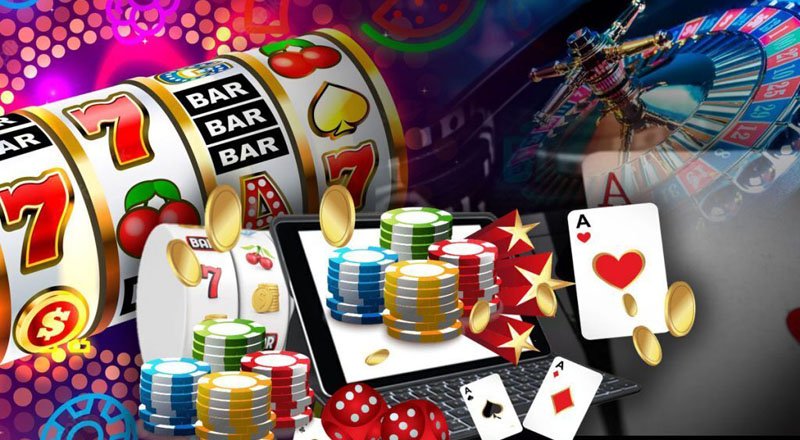Understanding the Different Types of Playing Cards in Gambling Games

Casino offerings have been a source amusement and thrill for countless players around the globe. One of the key components that renders these games captivating is the diversity of cards employed in different types of games. Understanding the different types of cards can enhance your gaming experience and improve your gameplay strategies. Whether you are drawn to classic card games like Texas Hold’em and blackjack or modern casino offerings, each game relies on a unique set of cards that influences the regulations and the flow of play.
In casino environments, cards appear in several styles, each designed to meet the needs of particular games. From regular decks to specialized card variations, the diversity plays a crucial role in shaping the mechanics of each game. By acquainting yourself with these cards and their uses, you can achieve more profound insights into the games and make more informed decisions at the table. This understanding not just enhances your gaming experience but also contributes to a higher-level approach to your chances of winning.
Types of Playing Cards
When discussing casino games, the type of playing cards used can greatly impact the gameplay and tactics. The most common deck is the traditional 52-card deck, which consists of 4 suits: spades. Each suit contains 13 ranks, from Ace to king. This traditional deck is essential in many games, such as poker, where gamblers aim to form the best hand possible or get as close to 21 as they can.
Some casino games utilize unique decks specifically designed for the game itself. For example, the well-known game of baccarat often employs multiple decks shuffled together, typically 6 or eight. This not only increases the complexity of the game but also affects wagering strategies, as players must account for the higher number of cards in play. Additionally, certain games may bring in joker cards or wildcards, adding further diversity and excitement to the gambling experience.
In niche games, custom decks may come into play. For instance, in games like bridge or Pinochle, participants might use unique rules with different card values or functions. These changes keep the gameplay fresh and allow for varied strategies to emerge. Understanding the various types of playing cards and their specific uses in various casino games is key to improving one’s gaming experience and improving overall performance at the tables.
Card Modifications in Casino Activities
In gambling activities, the kind of deck utilized can significantly affect both the gameplay and the tactics used by players. Most traditional card games, such as blackjack and five-card draw, typically utilize a standard 52-card deck. However, modifications do exist where extra wild cards or even several packs are utilized. For example, in 21, some gaming establishments may employ one to eight packs, which can change the odds and the basic tactics required to play effectively. Participants must be aware of the deck makeup, as it affects the casino advantage.
Another frequent variation in casino playing card activities is the utilization of specialized or specialized packs. For instance, some poker games might use a deck that includes unique images or designs, which can enhance the atmosphere at the gaming table. These custom packs often function to distinguish between different play formats or loyalty initiatives within the casino. F8bet While the traditional guidelines of the activity remain the same, the aesthetics can affect player involvement and satisfaction.
Lastly, the mixing methods employed with various types of decks can also impact play. Gaming establishments often utilize automatic mixing machines that can randomly reorder several packs effectively, making card counting more difficult. The frequency and method of mixing can differ widely based on the game and the gaming establishment’s rules. Comprehending these deck variations is important for any participant looking to enhance their tactics and overall satisfaction in gaming activities.
Value of Playing Card Values
In gambling activities, the worth of each playing card plays a critical role in determining the consequences of various games. Distinct activities assign specific values to playing cards, affecting tactics and gamer decisions. For instance, in 21, cards numbered 2 through ten are valued at their nominal value, while court playing cards hold a worth of ten, and the Ace can be valued either 1 or 11. Grasping these values allows gamers to make knowledgeable decisions during gameplay, boosting their odds of success.
Similarly, in the game of poker, the significance of card values extends to hands and combination hierarchies. Strong cards can form stronger combinations, such as two of a kind, straight hands, or flushes, which are essential for success in the game. Gamers must assess not only their personal hand but also potential combinations their opponents might hold. This tactical complexity adds thrill and complexity, making playing card values a central element in poker’s appeal.
Additionally, the mental aspect of card values cannot be dismissed. Players may use the awareness of card values to mislead or confuse their rivals. By grasping how a playing card’s value can impact the game’s mechanics, players can more effectively navigate risks and rewards, creating a thrilling atmosphere in gambling activities. Whether competing for entertainment or for real money, knowledge of playing card values significantly shapes the overall gaming experience.